Production
 Andrew’s first ventures as a record producer came some time after he had started working as an arranger and conductor for various recordings: He worked firstly with a Welsh singer/songwriter called Alan Phillips, re-mixing a single from his first album 20th Century Musical Man - using himself as keyboard player and “Big” Jim Sullivan on guitar. He produced two further singles for Alan, and went on to produce a singer called Bobbie McGee for EMI, and co-produced (with the artist) the first solo album by David Courtney, who had co-written (with Leo Sayer) and co-produced Roger Daltrey’s first solo album - and Sayer’s own debut albums. He also produced tracks for Leonard Whiting (“Romeo” in the Antonioni Zeffirelli film of Romeo & Juliet), Yellowstone & Voice, and several others who sunk without a trace.
Andrew’s first ventures as a record producer came some time after he had started working as an arranger and conductor for various recordings: He worked firstly with a Welsh singer/songwriter called Alan Phillips, re-mixing a single from his first album 20th Century Musical Man - using himself as keyboard player and “Big” Jim Sullivan on guitar. He produced two further singles for Alan, and went on to produce a singer called Bobbie McGee for EMI, and co-produced (with the artist) the first solo album by David Courtney, who had co-written (with Leo Sayer) and co-produced Roger Daltrey’s first solo album - and Sayer’s own debut albums. He also produced tracks for Leonard Whiting (“Romeo” in the Antonioni Zeffirelli film of Romeo & Juliet), Yellowstone & Voice, and several others who sunk without a trace.
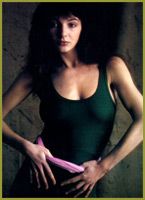 His production career really started in earnest when he was approached by his friend David Gilmour who asked him to produce some songs with an artist someone in the Pink Floyd office had discovered - a singer/songwriter called Cathy Bush. She subsequently changed her first name to Kate... This album would give Andrew his first commercial success as a producer.
His production career really started in earnest when he was approached by his friend David Gilmour who asked him to produce some songs with an artist someone in the Pink Floyd office had discovered - a singer/songwriter called Cathy Bush. She subsequently changed her first name to Kate... This album would give Andrew his first commercial success as a producer.
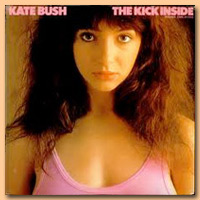 The first three tracks were produced at AIR Studios London in their old Oxford Circus location, and engineered by Geoff Emerick, with whom he had been fortunate enough to work on several previous occasions (he was assisted by Pete Henderson, who went on to produce Supertramp, among other artists): The Man with the Child in his Eyes and Berlin (The Saxophone Song) were the two songs from these sessions which ended up on Kate's debut album The Kick Inside. It took some time before Kate and Andrew returned to the studio to record the rest of the songs for the album: EMI had looked at many other possible producers in the meantime, and had accused David Gilmour (who had paid for the original sessions and introduced Kate to EMI) of selling them a dud artist with no other decent songs! He told them that in his view none of the other producers had come anywhere close to the qualities and empathy shown by Andrew for Kate's music, and suggested that they should go back to Andrew to make the rest of the album.
The first three tracks were produced at AIR Studios London in their old Oxford Circus location, and engineered by Geoff Emerick, with whom he had been fortunate enough to work on several previous occasions (he was assisted by Pete Henderson, who went on to produce Supertramp, among other artists): The Man with the Child in his Eyes and Berlin (The Saxophone Song) were the two songs from these sessions which ended up on Kate's debut album The Kick Inside. It took some time before Kate and Andrew returned to the studio to record the rest of the songs for the album: EMI had looked at many other possible producers in the meantime, and had accused David Gilmour (who had paid for the original sessions and introduced Kate to EMI) of selling them a dud artist with no other decent songs! He told them that in his view none of the other producers had come anywhere close to the qualities and empathy shown by Andrew for Kate's music, and suggested that they should go back to Andrew to make the rest of the album.
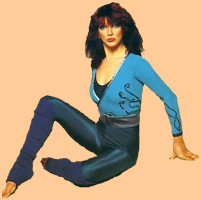 The rhythm section for this album was to be significant in another field later: Andrew brought together members of two groups (despite what some websites say, these were not session musicians!) - David Paton and Ian Bairnson from Pilot and Duncan Mackay and Stuart Elliott from Cockney Rebel. (Andrew had worked as an orchestral arranger for both groups.) They were perfect for this album (in fact Stuart has now worked on every one of Kate’s albums) and the sessions were a real joy. As a result of this, Stuart joined the rhythm section for the Alan Parsons Project recordings. Jon Kelly was Andrew’s choice of engineer - relatively unknown, but they had worked together on a couple of smaller projects before this. Jon later told Andrew that at the end of the first day, he sat back and thought “That’s it. I’ve peaked. It can’t get any better than this!"
The rhythm section for this album was to be significant in another field later: Andrew brought together members of two groups (despite what some websites say, these were not session musicians!) - David Paton and Ian Bairnson from Pilot and Duncan Mackay and Stuart Elliott from Cockney Rebel. (Andrew had worked as an orchestral arranger for both groups.) They were perfect for this album (in fact Stuart has now worked on every one of Kate’s albums) and the sessions were a real joy. As a result of this, Stuart joined the rhythm section for the Alan Parsons Project recordings. Jon Kelly was Andrew’s choice of engineer - relatively unknown, but they had worked together on a couple of smaller projects before this. Jon later told Andrew that at the end of the first day, he sat back and thought “That’s it. I’ve peaked. It can’t get any better than this!"
The album only took six wee ks altogether: a very intense and creative period. There was a large selection of songs to choose from - Kate had been writing for years! Wuthering Heights was written during pre-production - Kate came around to Andrew’s flat and played it to him one afternoon, and asked “Is that good enough for the record, do you think?” He definitely thought it was! The second album, Lionheart, was harder - Kate hadn't been allowed enough time off from promotion work to write new songs, so we ended up using some which had been short-listed for The Kick Inside. Although overall this was a good album, and one of which Andrew is proud, there were probably a couple of songs which, with hindsight, shouldn't have made it onto the record.
ks altogether: a very intense and creative period. There was a large selection of songs to choose from - Kate had been writing for years! Wuthering Heights was written during pre-production - Kate came around to Andrew’s flat and played it to him one afternoon, and asked “Is that good enough for the record, do you think?” He definitely thought it was! The second album, Lionheart, was harder - Kate hadn't been allowed enough time off from promotion work to write new songs, so we ended up using some which had been short-listed for The Kick Inside. Although overall this was a good album, and one of which Andrew is proud, there were probably a couple of songs which, with hindsight, shouldn't have made it onto the record.
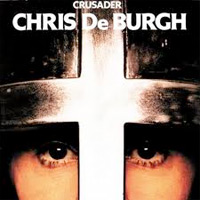 During the recording of Lionheart Andrew was approached by A&M records to produce an album with the Irish singer/songwriter Chris de Burgh. The same rhythm section was used again - but with either Mike Moran or Andrew Powell on keyboards. The album didn’t really break for Chris - his big break was not to come for several years - but there were some outstanding tracks - Crusader itself (the title track) should have been a single... Art Garfunkel, who was working in the next door studio at AIR London, wandered into our control room during a playback of Crusader, and at the end simply said “Wow” - several times, very slowly, over a period of a minute or more.
During the recording of Lionheart Andrew was approached by A&M records to produce an album with the Irish singer/songwriter Chris de Burgh. The same rhythm section was used again - but with either Mike Moran or Andrew Powell on keyboards. The album didn’t really break for Chris - his big break was not to come for several years - but there were some outstanding tracks - Crusader itself (the title track) should have been a single... Art Garfunkel, who was working in the next door studio at AIR London, wandered into our control room during a playback of Crusader, and at the end simply said “Wow” - several times, very slowly, over a period of a minute or more.
 “Tim Rice called me up shortly after I had moved back from L.A. to London, and asked whether I would like to co-produce an album with him for Elaine Paige. I thought about it for 2 seconds, then said yes. The sessions - again at AIR London, with David, Ian, and Stuart - Mike Moran and I again sharing keyboard duties, were great fun if a little odd. Elaine was playing in Cats at the time, so would have to disappear from the studio, get into her costume and make-up, then return quite late to see if there was anything still going on at the studio. Tim, with his wealth of contacts, managed to get unreleased songs from Barry and Robin Gibb, Francis Lai, Paul Simon and Paul McCartney - my contributions were songs from Dave Townsend and Gilbert O’Sullivan. So there was no shortage of good material. Elaine turned in one of my favourite performances by her on the Francis Lai/Tim Rice song The Second Time: which is also one of my favourite arrangements.”
“Tim Rice called me up shortly after I had moved back from L.A. to London, and asked whether I would like to co-produce an album with him for Elaine Paige. I thought about it for 2 seconds, then said yes. The sessions - again at AIR London, with David, Ian, and Stuart - Mike Moran and I again sharing keyboard duties, were great fun if a little odd. Elaine was playing in Cats at the time, so would have to disappear from the studio, get into her costume and make-up, then return quite late to see if there was anything still going on at the studio. Tim, with his wealth of contacts, managed to get unreleased songs from Barry and Robin Gibb, Francis Lai, Paul Simon and Paul McCartney - my contributions were songs from Dave Townsend and Gilbert O’Sullivan. So there was no shortage of good material. Elaine turned in one of my favourite performances by her on the Francis Lai/Tim Rice song The Second Time: which is also one of my favourite arrangements.”
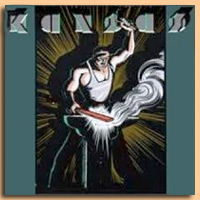 The Kansas album came about by an unusual route - Andrew’s friend David Pack told him about a music and tennis festival happening in Atlanta (they both used to play tennis in L.A. and U.K. whenever they met) so he went along. Andrew says “It was great fun - doubles all day with various pros (I was partnered with Matt Mitchell) and rehearsals in the evenings for an end of festival gig. The event was run by a tennis pro named Dave Austin and Kansas’ drummer - Phil Ehart. He and I got on well, kept in touch, and about 2 years later he called me to invite me over to Atlanta & Nashville to produce the group’s new album Power - their first recording with the new members Billy Greer and Steve Morse. (Steve Walsh paid me the compliment of saying that I had got better vocal performances out of him than any other producer he had worked with.) A very enjoyable album - great musicians to work with in the studio, and plenty of tennis as well. I was fascinated to hear Steve Morse, when he was doing acoustic guitar overdubs, rattling off various works by Bach and John Dowland in between takes!”
The Kansas album came about by an unusual route - Andrew’s friend David Pack told him about a music and tennis festival happening in Atlanta (they both used to play tennis in L.A. and U.K. whenever they met) so he went along. Andrew says “It was great fun - doubles all day with various pros (I was partnered with Matt Mitchell) and rehearsals in the evenings for an end of festival gig. The event was run by a tennis pro named Dave Austin and Kansas’ drummer - Phil Ehart. He and I got on well, kept in touch, and about 2 years later he called me to invite me over to Atlanta & Nashville to produce the group’s new album Power - their first recording with the new members Billy Greer and Steve Morse. (Steve Walsh paid me the compliment of saying that I had got better vocal performances out of him than any other producer he had worked with.) A very enjoyable album - great musicians to work with in the studio, and plenty of tennis as well. I was fascinated to hear Steve Morse, when he was doing acoustic guitar overdubs, rattling off various works by Bach and John Dowland in between takes!”
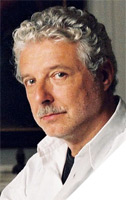 Andrew’s work with the Austrian artist André Heller (who began as a sort of German-language Bob Dylan, and became a sculptor, playwright, theatre impresario and painter) started when he was asked to write some music for “Feuertheater” - a theatrical performance/fireworks spectacular in Lisbon harbour - which attracted an audience of some 500,000 people. Years later, when he was in Vienna working on the Freudiana show, he re-established contact with André and was asked to produce some tracks for what was supposed to be his final album. In true Sinatra tradition, he then went on to make two more “final” albums...both of which, however, featured tracks from the album which Andrew had done with him.
Andrew’s work with the Austrian artist André Heller (who began as a sort of German-language Bob Dylan, and became a sculptor, playwright, theatre impresario and painter) started when he was asked to write some music for “Feuertheater” - a theatrical performance/fireworks spectacular in Lisbon harbour - which attracted an audience of some 500,000 people. Years later, when he was in Vienna working on the Freudiana show, he re-established contact with André and was asked to produce some tracks for what was supposed to be his final album. In true Sinatra tradition, he then went on to make two more “final” albums...both of which, however, featured tracks from the album which Andrew had done with him.